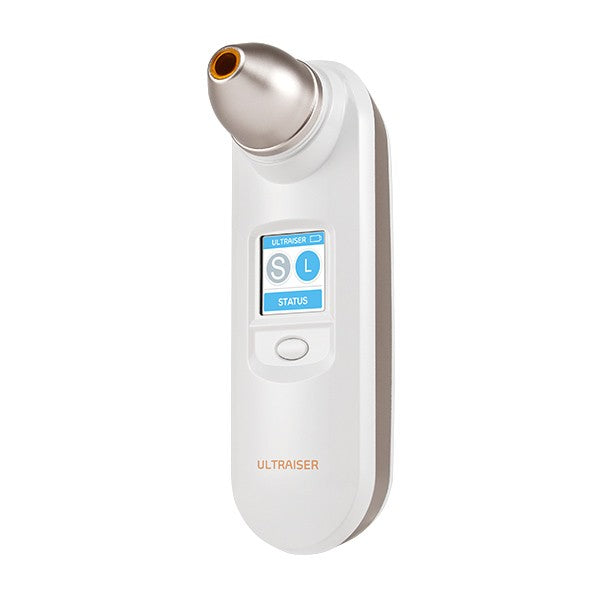HIFU Treatment: What is it?
HIFU stands for High-Intensity Focused Ultrasound. It is a medical technology that uses focused ultrasound waves to deliver precise and targeted energy to specific tissues in the body. HIFU treatment is non-invasive, meaning it does not require any surgical incisions, and it has a wide range of medical applications.
High-Intensity Focused Ultrasound (HIFU)
In HIFU procedures, a specialized device called a transducer is used to emit high-frequency sound waves. These sound waves pass harmlessly through the skin and other tissues until they reach a specific focal point within the body. At the focal point, the energy becomes highly concentrated, generating heat and causing thermal ablation or destruction of the targeted tissue.
HIFU has been used for various medical treatments, including the treatment of prostate cancer, uterine fibroids, and certain types of tumors. It is also used in cosmetic medicine for skin tightening and lifting. HIFU offers several advantages, such as precise targeting, minimal damage to surrounding tissues, reduced risk of infection, and shorter recovery times compared to traditional surgical procedures.
It's important to note that while HIFU is a promising medical technology, its specific applications, availability, and effectiveness may vary depending on the country and the specific medical condition being treated. It is always recommended to consult with a healthcare professional for accurate and up-to-date information.
History of HIFU Treatment
The history of HIFU (High-Intensity Focused Ultrasound) dates back several decades. Here is a brief overview of its development:
1960s: The concept of using focused ultrasound for medical purposes was first introduced. Initial experiments involved using ultrasound to generate heat and produce lesions in animal tissues.
1970s: Researchers started exploring the potential of focused ultrasound for non-invasive treatment of tumors. The first clinical application of HIFU was reported in 1974, where focused ultrasound was used to treat a brain tumor.
1980s: The development of technology for focusing ultrasound waves improved, allowing for more precise targeting. HIFU began to gain attention as a potential alternative to surgery for treating various conditions.
1990s: HIFU gained further momentum in the medical field. Clinical trials and studies were conducted to evaluate its efficacy and safety in treating prostate cancer, uterine fibroids, liver tumors, and other conditions. HIFU devices and techniques continued to evolve, aiming to enhance precision and control.
Early 2000s: HIFU received regulatory approvals in certain countries for specific medical applications. It became an established treatment option for prostate cancer in some regions, particularly in Europe and Asia.
Late 2000s to Present: HIFU technology continued to advance, leading to improved imaging, treatment planning, and monitoring capabilities. Research and clinical trials expanded to investigate HIFU's potential in various fields, including oncology, gynecology, neurosurgery, and cosmetic medicine.
Today, HIFU is an established and evolving medical technology. It is utilized in the treatment of prostate cancer, uterine fibroids, liver tumors, pancreatic cancer, bone metastases, and other conditions. Ongoing research and technological advancements aim to broaden its applications and enhance its effectiveness in a range of medical specialties.
HIFU treatment for skin tightening and lifting
HIFU treatment has gained popularity in the field of cosmetic medicine for its application in skin tightening and lifting procedures.
HIFU for skin tightening and lifting utilizes ultrasound energy to stimulate collagen production and improve the elasticity of the skin. Collagen is a protein that provides structural support to the skin, making it firm and tight. However, with aging and other factors, collagen production decreases, leading to sagging and wrinkling of the skin.
During a HIFU treatment for skin tightening, a handheld device emits focused ultrasound waves into the deeper layers of the skin, targeting specific areas where collagen production is needed. The ultrasound energy penetrates the skin without causing damage to the outer layers, delivering thermal energy to the targeted tissues. This energy triggers a process called neocollagenesis, which refers to the production of new collagen by the body in response to the thermal stimulation.
The generated heat from the ultrasound energy creates controlled micro-injuries, stimulating the body's natural healing response. Over time, the newly formed collagen helps to tighten and lift the skin, reducing the appearance of wrinkles, fine lines, and sagging.
HIFU treatments for skin tightening are typically performed on areas such as the face, neck, jawline, and décolletage. The procedure is non-invasive, meaning it does not require incisions or surgery. It is often considered a safe and effective alternative to surgical facelifts, with minimal downtime and recovery compared to invasive procedures.
It's important to note that the results of HIFU treatments for skin tightening can vary depending on factors such as individual skin characteristics, the severity of skin laxity, and the specific device and technique used. Multiple sessions may be recommended for optimal results, and the effects of the treatment can continue to improve over several months as collagen production progresses.
If you're considering HIFU for skin tightening and lifting, it's advisable to consult with a qualified healthcare professional or aesthetic practitioner who can assess your suitability for the procedure, discuss your expectations, and provide personalized recommendations. They can guide you on the benefits, potential risks, and expected outcomes based on your specific circumstances.
Find out more about ULTRAISER's HIFU technology and portable devices – contact one of our friendly team today on sales@ultraiser.com.


